P. Ramlee: Where lies the heart of a star

Every genius has his roots. Each marvel springs from a source.
In 1925, a young sailor from Lho' Seumawe in Acheh by the name of Teuku Nyak Puteh settled in Penang to marry a quiet lass from Butterworth, Che Mah Hussein.
As the modest couple began a new life in a village, it is unlikely they could in their wildest dreams have imagined that they would have a son who would someday become a legend.
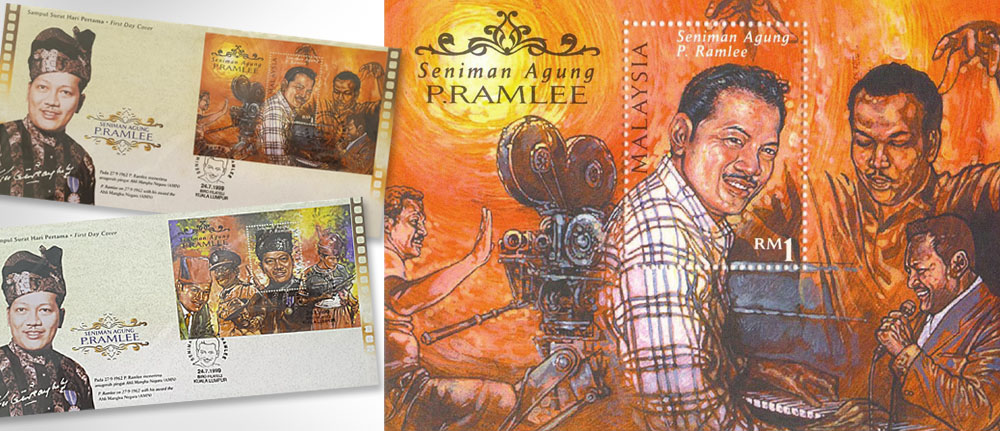
P. Ramlee became just that; an icon whose stature rang across the continent, the most consummate entertainer – actor, director, singer, composer, storyteller – Malaysia has seen or is ever likely to.
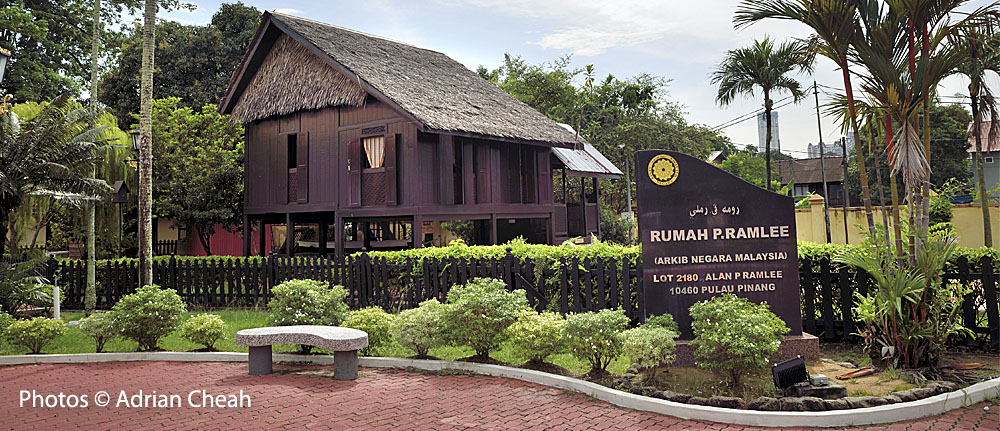
It all began at a tiny address in Penang island – 4A Caunter Hall Road – a humble house typical of a Malay kampung structure raised on stilts with attap-thatched roofing, corrugated sheets of iron, and wooden floors.
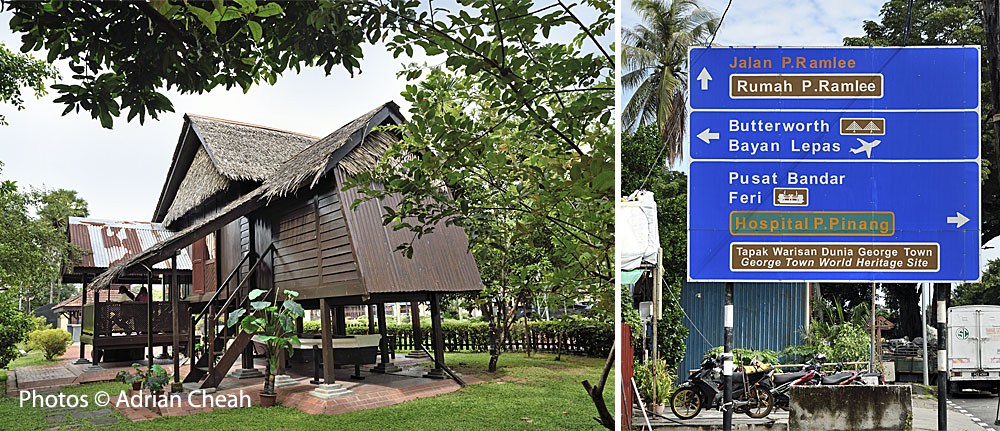
The house still stands at the road, which some 10 years after his death was renamed Jalan P. Ramlee and now draws streams of curious visitors and tourists.
Lush, open-spaced and idyllic, the environment of the place, dotted with swaying coconut trees, was ripe for nurturing the spirited, romantic passion of an artistic heart.
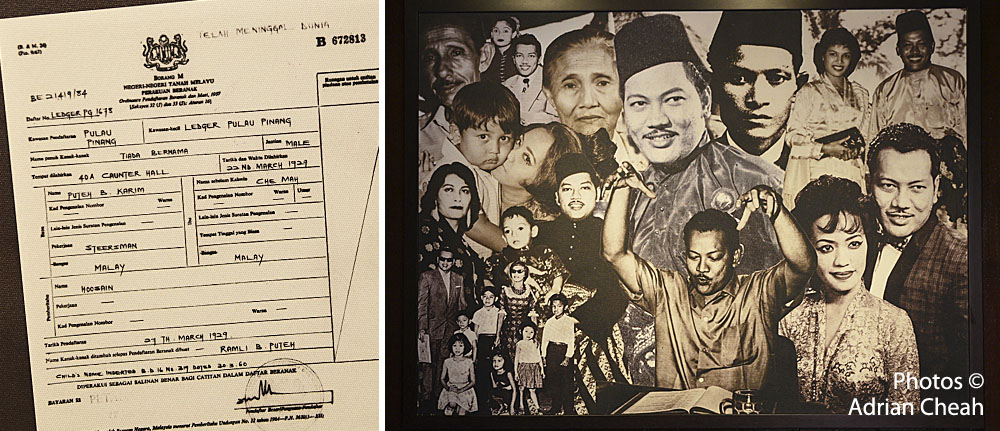
Ramlee was born in this house of his maternal grandmother on March 22 – on the festive day of Hari Raya Aidil Fitri – of 1929. After 44 days he was taken to his parent's home in Kampung Jawa, but in later years kept coming to Caunter Hall till his groundbreaking move to the illustrious studio of the Shaw Brothers in Singapore.
Ramlee is said to have taken to singing and storytelling very naturally at a tender age. Even as a teenager, his steady resonant voice so impressed his neighbours that he was frequently asked to be the muezzin and call out daily Muslim prayers at the Kampung Jawa Baru mosque.
But it was the rendition of his celebrated song Azizah, composed in his early 20s for his first love, which thrust him on the threshold towards stardom.
In 1948, B.S. Rajhans, a Singaporean director scouting for talents, attended an agricultural show in which Ramlee's band just so happened to be invited to perform. Rajhans was instantly taken with the band and Ramlee's marvelous delivery of Azizah. He asked Ramlee and his friend Sukardi if they would be interested in a screen test for the Shaw Brothers' Malay Film Productions.
On the morning of August 8, Ramlee and Sukardi boarded a train at the Butterworth railway terminal, their excited minds set on the famed studio far south in Singapore.
Rajhans himself later directed Ramlee's first movie called Chinta, which featured Siput Sarawak playing the female lead. Ramlee was cast as the villain and was also the background singer.
It is said that the young Ramlee eagerly took up any task during production and was willing to be cast in any role – hero or villain. With his beautiful voice, he later became the first Malay film star not to require a background singer.
It is understood that the days preceding Ramlee's sudden demise in 1973 were filled with strains in his personal life. But the impact he had made among his admirers was by then already indelible.
When he died of a heart attack at the age of only 44 years at his last home in Kuala Lumpur, he had acted in 60 films and directed 37.

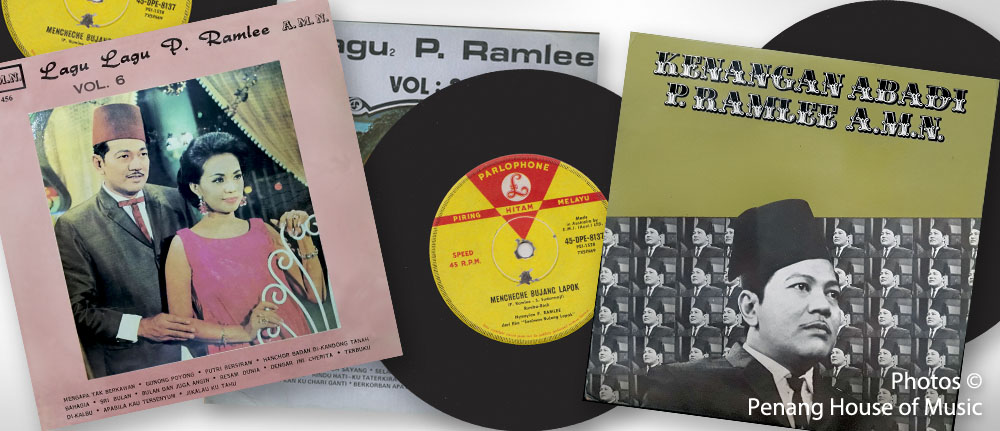
He has also crooned more than 250 original songs – including tunes that are now immortal classics such as Bunyi Guitar, Malam ku Bermimpi, Jeritan Batinku and the immensely melodious Jangan Tinggal Daku.
His movies, popularly reruns on television ever since have become household names and intimately adored by a wide cross-section of Malaysian society.
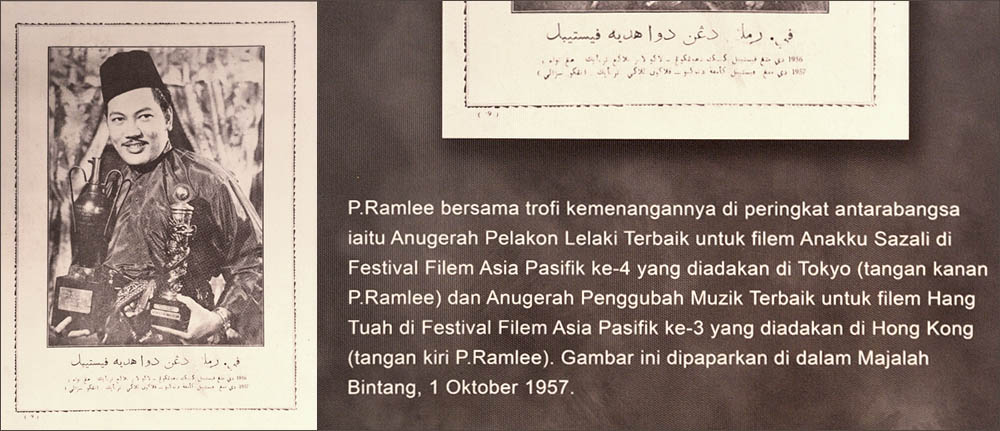
In 1957, he was awarded the best male actor for Anakku Sazali at the Asian Film Festival in Tokyo. In 1959, his Pendekar Bujang Lapok won the best comedy at the same festival held in Kuala Lumpur, and in 1963 he was given an extraordinary award as Asia's Most Versatile Talent for his performance in Ibu Mertuaku.
His string of honours is dizzying. Even the Malaysian army offered him the title of 'Sergeant Titular' because of his acting in the movie Sergeant Hassan!
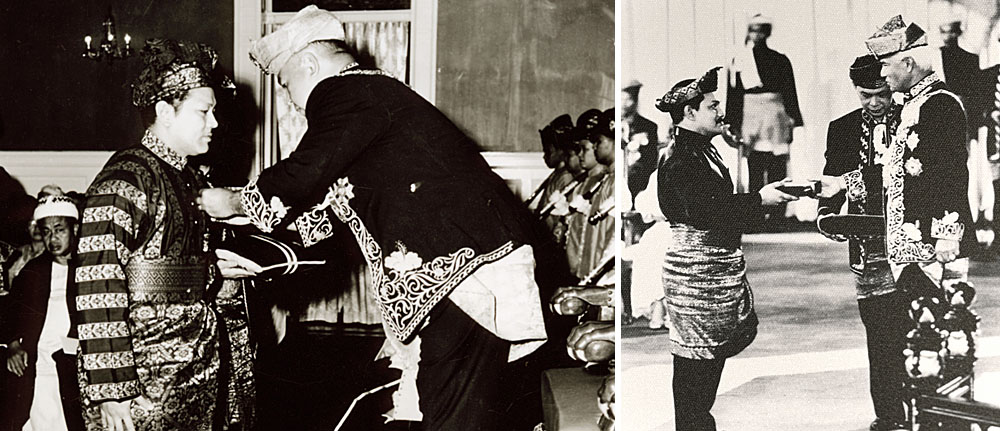
Left: On 27 September 1962, His Majesty the Yand di-pertuan Agong Tuanku Syed Harun Putra ibni al-Marhum Syed Hassan Jamalullail awarded P. Ramlee the medal of honour as the Ahli Mangku Negara (AMN).
Right: On 6 June 1990, His Majesty the Yand di-pertuan Agong Sultan Azlan Muhibbuddin Shah ibni Almarhum Sultan Yussuff Izzuddin Shah Ghafarullahu-lah posthumously conferred upon P. Ramlee the Star of the Loyal Commander of the Crown (DPSM) which carries the title of Tan Sri. The photo shows his son Nasir P. Ramlee receiving the award on behalf of his late father.
Some of P. Ramlee's films laid benchmarks and lasting imprints in local film lore. The movie Sitora Harimau Jadian (1964) was filled with trick shots and makeup techniques considered novel in the industry then.
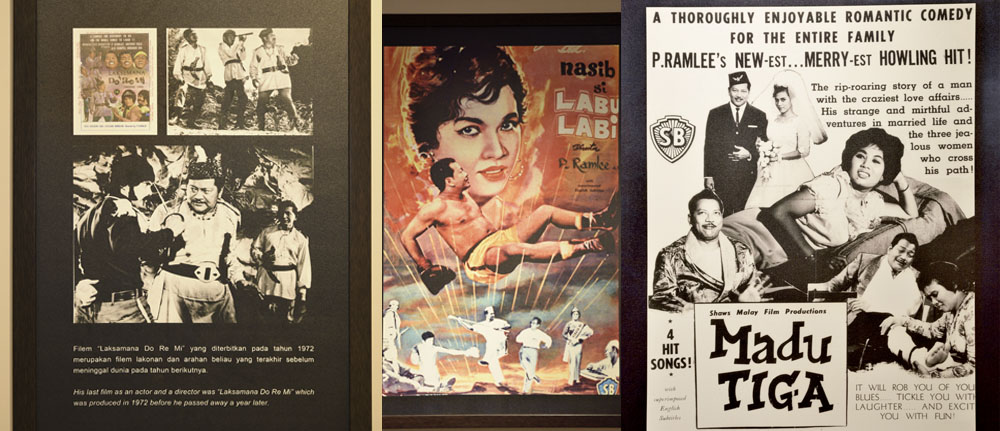
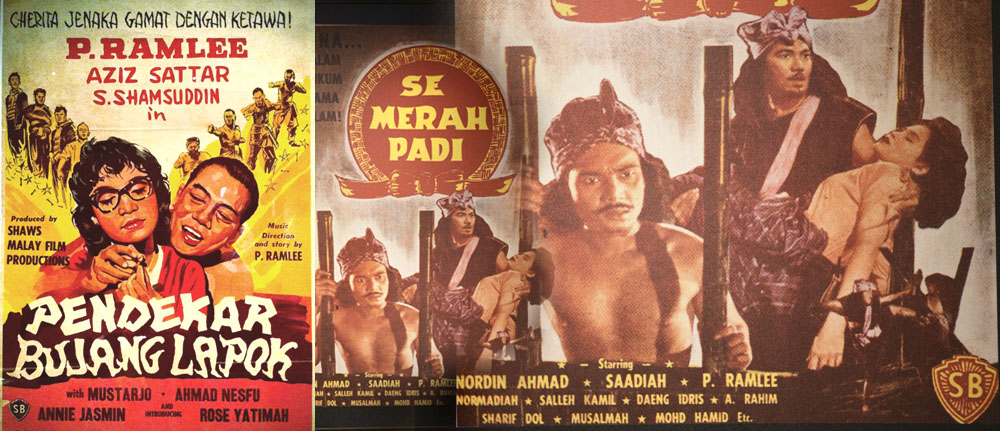
The story was about a retired fighter who arrives with his family to trade in a village just as superstitious folks hear accounts of a magical creature haunting the area by night. It thrilled the audiences, as did the comedies Madu Tiga, Nujum Pa' Belalang and Laksamana Do Re Mi enrapture viewers from all walks of life.
Intriguingly enough, Malaysians could do well to thank none other than their Japanese occupiers of the Second World War for refining the talents of the boy who would someday become the country's greatest screen idol.
Ramlee was under the tutelage of the brass band head of the Penang Free School, Encik Kamaruddin, when the Japanese invaded and he was forced to stop schooling. He soon attended the Kaigun, a Japanese navy school, where while picking up Japanese songs he was trained in violin, piano and ukulele under the tutorship of Hirake San.
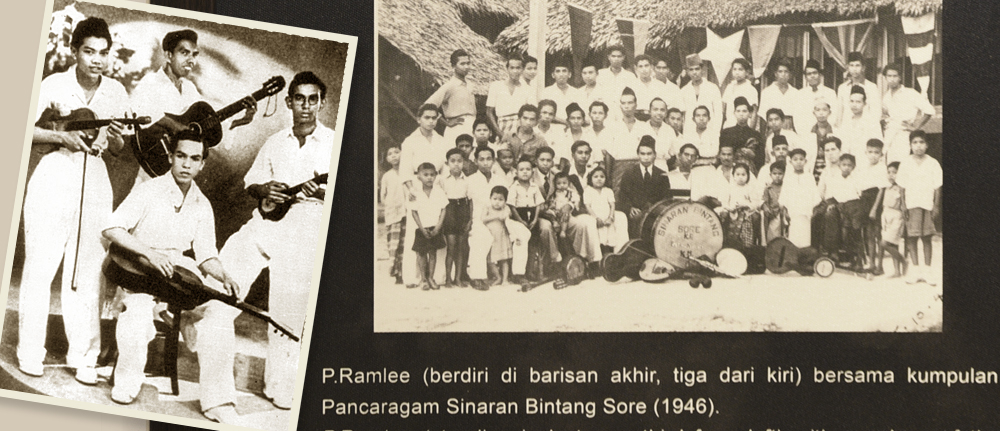
He later learnt to strum the guitar from Zain Kechik, the head of the Bintang Sore band.
Ramlee's own first band was Teruna Sekampung – a collection of young eager beavers who were only too happy to jam away at wedding receptions and other festive occasions with their violin, drum set, saxophone, double bass and a couple of guitars.
He then joined the Mutiara band and still later the Pancaragam Keroncong Pemuda Indonesia as its viola player. It is with this last band that at the age of 18 years he won a regional contest for bands in Penang and Province Wellesley for the song Keroncong Oh Suci, which he belted out himself.
That same year he was also chosen as North Malaya's Star Singer in a contest organised by Radio Pulau Pinang. It was during this event that he first used the initial 'P', from his father's name, Puteh, in front of his own.
In fact, unknown to many, Ramlee's original name was Teuku Zakaria bin Teuku Nyak Puteh. His father, the Achehnese sailor, later changed it on the advice of his elder brother.
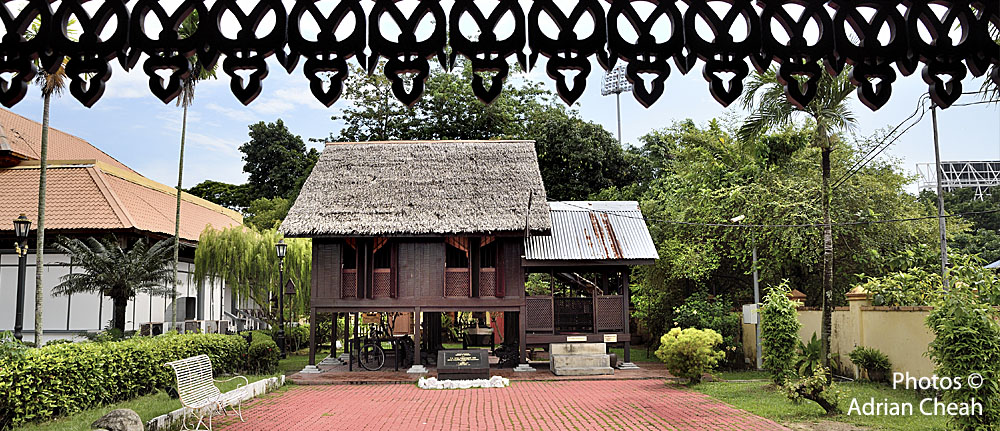
Today, coconut trees still sway near Ramlee's birthplace and children in the surrounding village can be heard at play just like ages ago.
The portraits of Teuku Nyak Puteh and his wife Che Mah now hang within the house that 75 years ago ushered in a child destined for stardom.
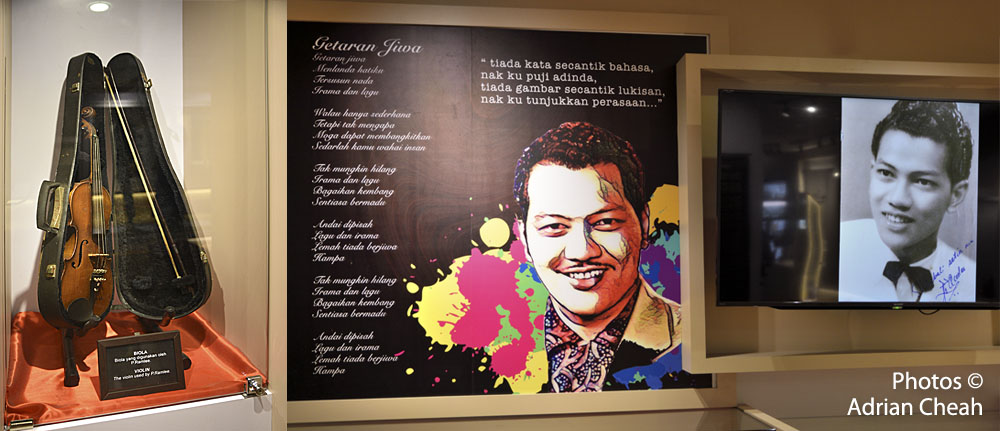
Amid the very down-to-earth air of the small building, their meek rustic faces beam with such simplicity that one cannot help but sense that beautiful spirit of innocence, that earnest humility, which raised P. Ramlee to move a nation.
-------------------------------------
Written by Himanshu Bhatt
Photographed by Adrian Cheah & Penang House of Music
© All rights reserved.
Updated: 20 July 2022
-------------------------------------
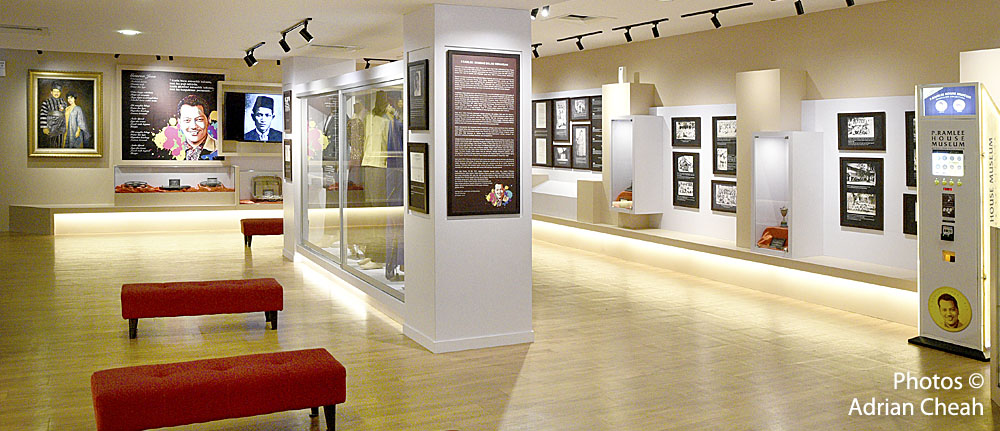
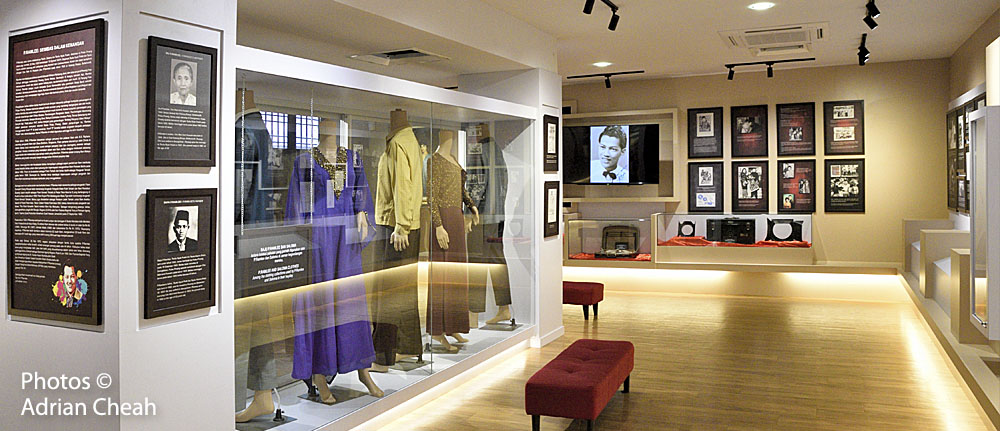
P. Ramlee Birth House & Gallery
Lot 2180, Jalan P. Ramlee, Taman P. Ramlee, 10460 George Town, Penang
T: +604 281 7484
Open daily from 9am – 5pm except Mondays
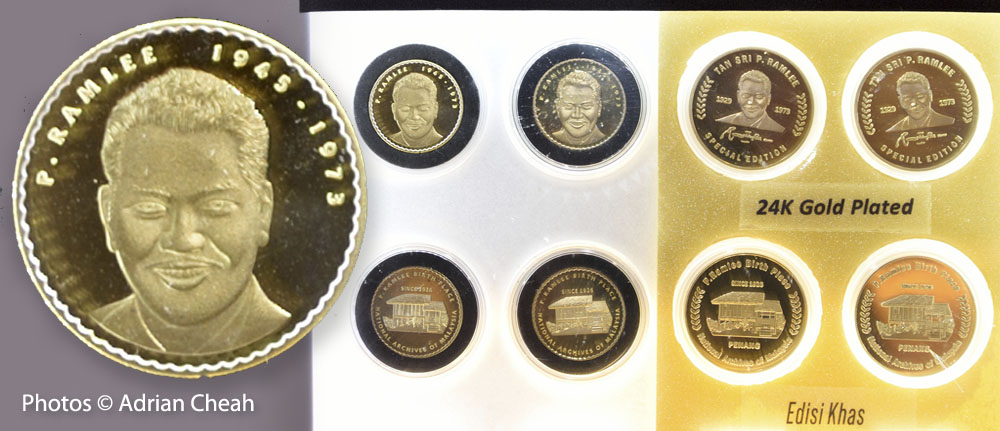
PS: A vending machine dispensing specially designed coins of P. Ramlee is available at the gallery.